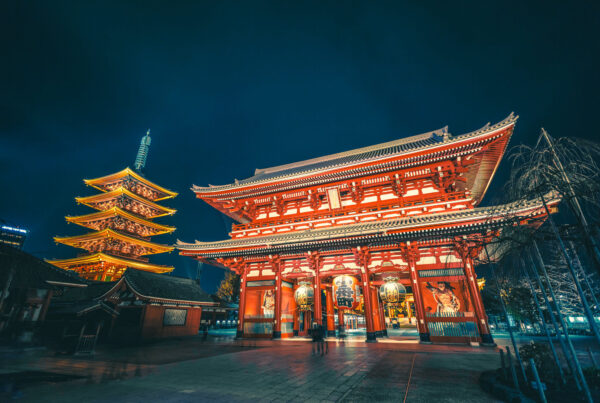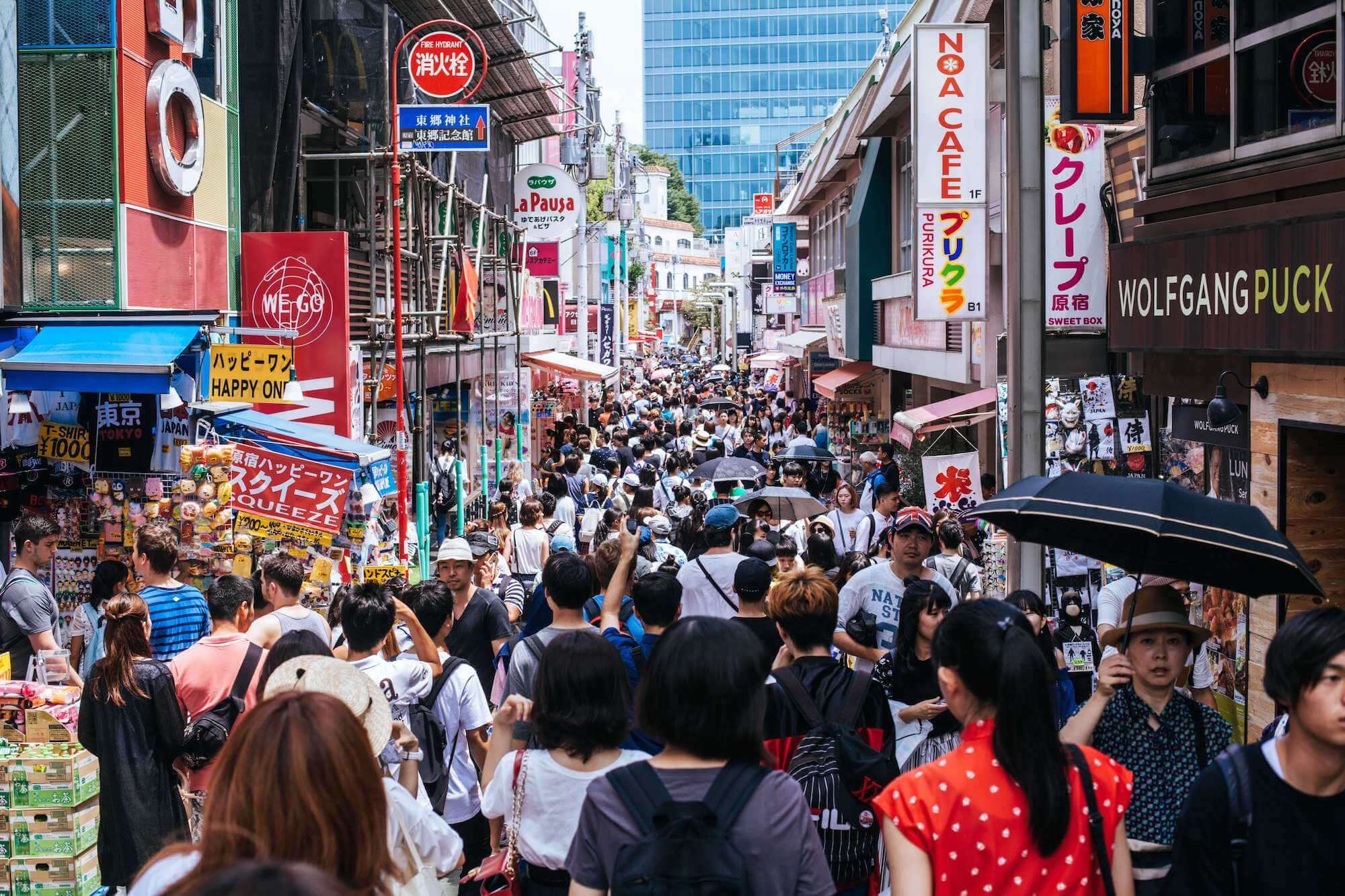Top facts about the Japanese language – One of the most difficult languages in the world to master, the Japanese language is a harmonious hybrid of different cultures. A linguistic gem not to unlike its motherland in terms of versatility and complexity.
Picture yourself sitting cross-legged in a traditional tea room, savoring a steaming cup of matcha while flawlessly conversing with your Japanese host. Sounds like a scene from a movie? Well, it doesn’t have to be just a dream! By embarking on the remarkable journey of learning Japanese, you can open doors to unforgettable experiences and gain insights into one of the most fascinating languages in the world. From mastering thousands of kanji characters (yes, really!) to understanding subtle nuances of honorifics and humble speech patterns, let’s dive into the captivating world of Nihongo – where ancient traditions intertwine with modern-day communication methods. Ready to embark on this linguistic adventure? Let’s unveil some mind-blowing facts about learning Japanese!
Unnecessary as it is to speak Nihongo to enjoy Japan nowadays, basic knowledge of the language will spice up any visit. If you keen to learn, here are 10 facts to know about the Japanese language, before beginning any course.
Table of Contents
Historical Origins of the Japanese Language are Unknown
Though the ninth most-spoken language worldwide, with some 128 million native speakers, the origins of the Japanese language are unknown. Historically, text with substantial use of Japanese only appeared in the 8th century. Though today classified by linguists as part of the Japonic language family, relationships with other native tongues such as Korean and Austroasiatic languages remain uncertain.

Children’s study guide for the Japanese language. Within Japan, the subject is called kokugo (国語), which means “national language.”
From the 8th century, written and spoken Japanese both underwent substantial transformations too, with significant changes to the Kana scripts and the inclusion of European/English loanwords. The end result is the complex language that we know of today; which by the way, is still evolving. It is also one in which Chinese-sounding nouns, English transliterations, and Japanese particles can all coexist within one short sentence, harmoniously.
Read also:
The Language Was Heavily Influenced by Chinese
The classic Chinese writing system was imported into Japan together with Buddhism. During the Heian Period between AD 794 and 1185, Japanese phonology was also heavily influenced by the Chinese tongue. Furthermore, the earliest Japanese texts were entirely written using Chinese characters.
It is very wrong to assume Japanese is derived from Chinese, though. For a start, the Japanese grammar system is utterly unlike that of Chinese. Verbs follow nouns in Japanese, while it’s the other way around in Chinese.
Even the above-mentioned ancient texts already displayed notable differences in sentence structures. It is thus at most a historical situation of Chinese exerting an enduring influence on Japan’s native language.
There Are Three Writing Systems
Modern Japanese has three systems of writing. Simply put, the two “kana” systems are alphabet-like and based on English vowels. The Kanji system, or “Chinese words” system, is logographical.

All three Japanese scripts found within a travel attraction description.
Additionally, the three systems, or scripts, could be described as follows:
- Hiragana: Used for sentence particles, suffixes, copulas, etc.
- Katakana: Used for transliterations of loan words, sounds, western names, etc.
- Kanji: Used for nouns and names.
Of note, several kana characters were officially marked as obsolete after World War II, the most famous of which is “ye.” However, some companies opt to continue using these words as stylistic branding. For example, the famous Ebisu beer is actually spelt as “Yebisu Beer” in (outdated) Hiragana script.
Here’s another fact about the Japanese language too; specifically, the origin of the kana scripts. They are popularly believed to be created by Kukai, Japan’s most famous Buddhist master and the founder of Koyasan. The story goes that upon returning from a pilgrimage in China, the master monk decided that his mother tongue would greatly benefit from the inclusion of a phonetic alphabetic system.
Japanese Isn’t a Tonal Language
Unlike Chinese or Thai, Japanese isn’t tonal in nature. In other words, different inflections of a word doesn’t change the meaning.
That said, native speakers often vary pitch accents to differentiate between homophones. To give some examples, the word kami said with an emphasis on the first syllabus means “god.” If the accent is shifted to the second syllabus, it means “paper.”
Japanese Is the Fastest Spoken Languages in the World
A study by the University of Lyon concluded that Japanese is the fastest spoken language worldwide, with an average rate of 7.84 syllables per second. In comparison, English only clocks 6.19 syllables per second. Vice versa, the study determined that Japanese has a relatively low information density rate at 0.49, as compared to 0.91 for English.
Without going into complex mathematical explanations, it simply means that the Japanese language needs more syllables to describe something, thus the need to speak it faster.
Modern Japanese is the Tokyo Dialect
“Old Japanese” is in truth, the Kansai dialect, the region being where Imperial capital Kyoto was located.
With the shifting of the power base to Tokyo during the Tokugawa Shogunate, the Tokyo dialect evolved into standard Japanese. However, the Kansai dialect is mostly still comprehensible by speakers of “standard” Japanese today.
Read also:
Francis Xavier Once Claimed the Japanese Language Was Created by the Devil
Jesuit missionary Francis Xavier once claimed that the Japanese language was created by the Devil to obstruct evangelism in Japan. The religious aspects of this astonishing proclamation aside, Japan’s native tongue is indeed one of the toughest languages in the world to master, because:
- Most Kanji characters have multiple pronunciations. For example, the character for temple (寺) is pronounced as tera by itself. But when paired with other Kanji, it becomes ji. The reason for this is there being a kun-yomi (Japanese pronunciation) and an on-yomi (Chinese pronunciation) for most Kanji. The latter is used when paired with other Kanji for easier speaking.
- There are many homophones in the language. 新, 信, and 真 could all be read as shin.
- There are five basic ways to conjugate a Japanese verb, with each transformation denoting positive/negative, volition, potential, etc. However, conjugated verbs could be further modified by the addition of different suffixes. A simple verb like taberu (to eat) can thus become tabenakereba or taberaremasen.
- There are multiple ways to say “I” and “you” in Japanese, each with some sort of undesirable interpersonal connotation. To avoid the latter, native speakers generally use names/titles with an honorific. For example, okyaku-san. (Esteemed customer)
- Since Francis Xavier’s proclaimation, numerous loanwords have been added to the language, not all of which are from English. The confusing thing about these loanwords is that many do not sound like the original. For example, toilet is to-i-re, PC is pasocon, and so on.
In short, mastering Japanese is akin to learning French grammar and memorizing thousands of Chinese characters at the same time. While being constantly conscious of Japanese interpersonal etiquette. While also remembering a long list of curiously transliterated terms.

Study guides for the above-mentioned JLPT certification. On another note, certifications of level 1 and 2 provides immigration points for professionals applying for residency in Japan.
Trivia: The Japanese Language Proficiency Test (JPLT) is a world-renowned certification test for non-Japanese speakers. Divided into five “levels,” it is sometimes said that even native Japanese will find it tough to pass Level 1 i.e. the highest level.
There Are Different Levels of Formality
Believe it or not, level of formality to use is a full subject in any Japanese language study. Known as Keigo, the many phrases and word transformations involved are often baffling and tedious to non-Japanese students. For example, a simple word like “please” could be said in totally different ways, depending on one’s status during the conversation. Or one’s occupation.
A reflection of Japan’s emphasis on social hierarchy, Keigo is frankly, incredibly hard to internalize without regular use/practice. On the other hand, it does offer an insightful peep into the Japanese culture. One that could be fascinating as well.
Keigo means “polite language” but it can also be used to spite/mock. For example, a friend suddenly spewing strings of Keigo is probably unhappy with you over something.
Japanese Onomatopoeia Words Are Fascinating and Befuddling
If you’re a fan of Japanese pop entertainment, you would surely have heard of phrases such as ira ira, giri giri, waku waku, and so on. These are Japanese onomatopoeias, or compound words derived from sounds associated with the intended meaning.
Despite their definition, though, they could be completely baffling to someone unfamiliar with the language. This is made worse by there being several hundreds of these comical sounding phrases. With more constantly added each year.
Formal and Informal/Spoken Japanese Can Be Utterly Unlike
Bluntly put, grammatically proper Japanese can be quite a mouthful to speak. A simple “thank you very much” is domo arigato gozaimasu. “I think” is formally, kamo shiremasen.
Spoken Japanese is therefore often condensed, with commonly recurring/understood sounds removed. For the longest phrases, entire chunks are even slashed.
Arigato thus becomes domo or just ari. The well-known sumimasen is condensed to sumanai or even just suman.
And then there are regional dialects with their different nouns and exclamations, differences which would utterly baffle even Tokyo and Osaka residents. At places such as Miyazaki Prefecture, souvenirs themed around such differences are actually widely sold.
An Anime character utterly baffled by Tohoku dialect. The dude is the only one speaking in dialect and even if you do not understand a word, you will surely still notice the differences in their dialogue.
One of the Most Flexible and Fascinating Languages in the World
Without a doubt, Japanese is one of the toughest languages to learn. However, the heavy use of western loanwords and Chinese logograms makes it one of the most flexible languages in the world too. Fans of Manga would long have noticed the ease in which western and oriental terms are incorporated within the same statement.
At the same time, Japan’s native tongue is also a window into the country’s cultural and social etiquette; this, most evident from the heavy emphasis on polite language. Again, while it’s unnecessary to speak the language to enjoy Japan, knowing some degree of it will make any visit far more meaningful.
Be sure to follow us on Facebook, Instagram, Twitter, and Pinterest for more fun stuff! Matane!

Ced Yong
A devoted solo traveler from Singapore who has loved Japan since young. His first visits to the country were all because of video game and Manga homages. Today, he still visits for the same reasons, in addition to enjoying Japan’s culture, history, and hot springs.









